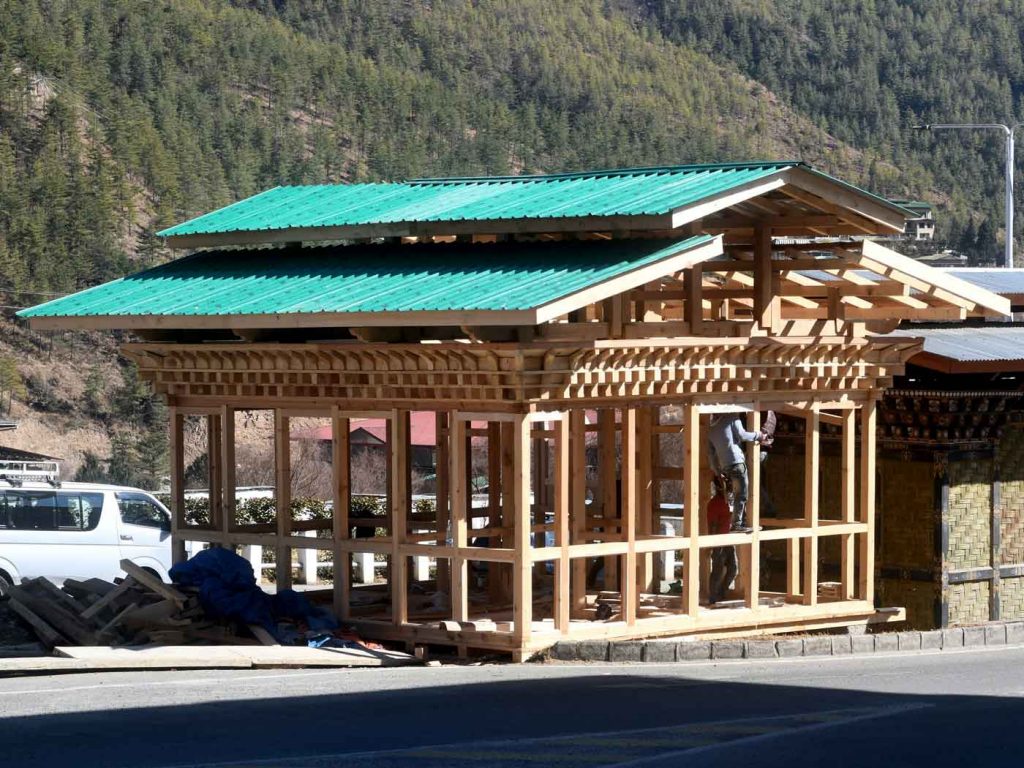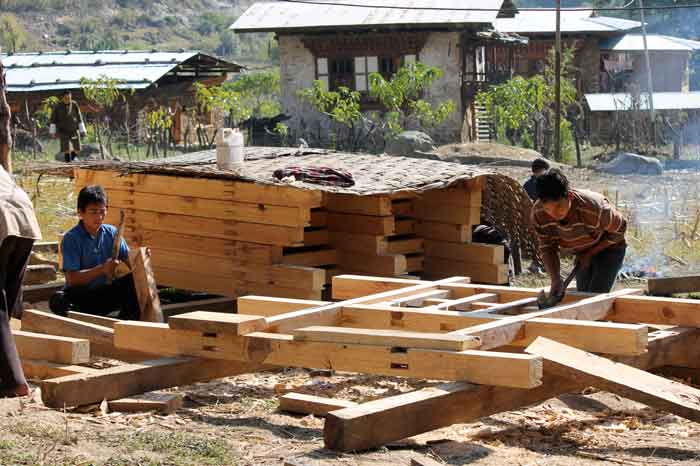Shingzo
Bhutan’s distinctive architecture is one of the most appealingly ubiquitous features that the visitor sees in the kingdom, whether in the more populated towns and urban centers or in the remote valleys and settlements that are sparse in human habitation.
Shingzo or carpentry makes a mark on the aesthetic beauty of Bhutan’s majestic dzongs, temples, palaces and bridges in an inimitable manner. The exquisite design and intricate details which characterize Bhutanese architecture are created by master carpenters known as Zo-Chen and Zo-Wo, words that can be translated as “Great Maker” and “Apprentice Maker”. Dzongs, or the ancient mountain fortresses of Bhutan, are some of the finest examples of woodwork in the country and lauded for their unique style, design, and architectural form. A distinctive feature of this style of traditional architecture is the omission of nails to join different parts of woodwork in a building. In the present day, residential buildings still maintain the basic traditional form and structure so that the unique brand of architecture endemic to Bhutan survives as a symbol for its cultural and traditional heritage.


